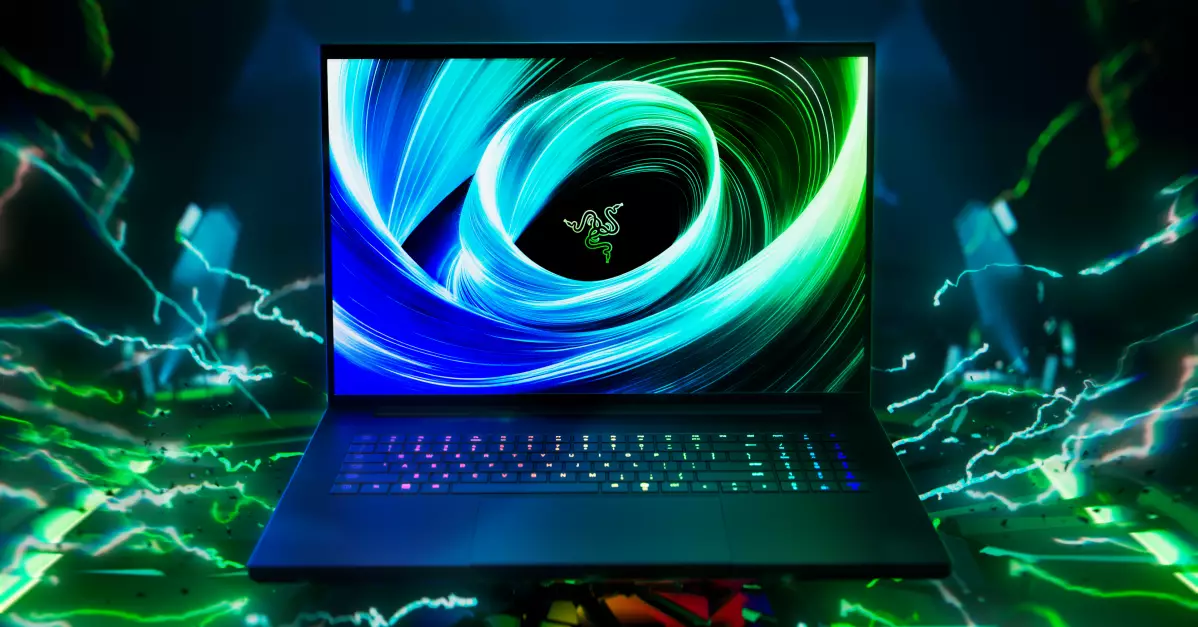The realm of gaming laptops is poised for a significant surge with recent preorders showcasing cutting-edge models equipped with Nvidia’s latest mobile GPUs. As the demand for high-performance machines increases, brands are racing to introduce their new offerings, leading to a competitive market where technology continuously evolves. Among these new models, Razer’s Blade 18 stands out with its impressive specifications and features.
Razer has unveiled its latest gaming laptop, the Blade 18, with capabilities that cater to dedicated gamers and content creators alike. This new model introduces a substantial 18-inch display, which allows users to choose between two stunning resolutions: a high-resolution 3840 x 2400 at a refresh rate of 240Hz or a smoother 1920 x 1200 at an astounding 440Hz. These display options provide flexibility, making the Blade 18 not only suitable for intense gaming sessions but also optimal for high-velocity multimedia editing. The gadget comes equipped with Nvidia’s RTX 50-series GPUs and the anticipated Intel Arrow Lake CPUs, promising powerful processing and graphic capabilities.
The starting price of $3,199.99 for the RTX 5070 Ti version places it in the premium category of gaming laptops, with the top-tier RTX 5090 variant priced at $4,499.99. This pricing reflects the high-end specifications that modern gamers have come to expect but may also serve as a barrier for casual users looking for affordable yet powerful options.
Razer isn’t alone in this competitive landscape. A slew of manufacturers, including Asus, MSI, and HP, are joining the ranks with their new models, which also sport the powerful RTX 50-series GPUs. Asus has introduced its flagship ROG Strix Scar 16, showcasing innovative features such as dynamic RGB lighting and robust gaming performance at a starting price of $3,299.99. The Strix Scar 16’s pricing reflects Asus’s reputation for delivering high-performance laptops tailored for immersive gaming experiences.
Furthermore, Asus’s Zephyrus series, particularly the G14 and G16, captures attention with a starting price of $2,499.99 for the former. Known for harmonizing gaming prowess with daily usability, the Zephyrus models mark an essential evolution in laptop design. They allow gamers to function in both gaming and professional environments.
MSI’s contributions are noteworthy as well, particularly with its Titan 18 HX AI model, which enters the market at a jaw-dropping $5,999.99. Such pricing raises eyebrows and prompts a discussion about the increasing costs of gaming laptops. Are these prices justified through improved technology, or are they reflective of market trends that prioritize premium experiences over accessibility?
The current assortment of gaming laptops raises critical questions about the direction of the portable gaming market. Many of the new releases feature prices that exceed their 40-series predecessors, suggesting a trend where innovation comes at a premium. The necessity for peak performance might lead consumers to accept higher price tags, but this could alienate a segment of the gaming community that seeks more budget-friendly solutions.
The anticipation for more value-oriented options remains palpable. Consumers often hope for the release of more budget-friendly mobile GPUs, which could level the playing field and offer affordable alternatives without sacrificing performance. Unfortunately, skepticism regarding Nvidia’s mobile options lingers, especially considering the issues recently encountered with its desktop counterparts, such as modest performance improvements and manufacturing complications.
As the gaming laptop landscape evolves, it becomes crucial for gamers and tech enthusiasts to navigate these changes carefully. While models like the Razer Blade 18 and the Asus ROG series demonstrate technological progress, the exorbitant prices challenge the fundamental idea of accessibility in gaming. The onus is not only on manufacturers to innovate but also to find a balance that keeps high-performance computing reachable for all gamers. Looking ahead, it will be essential for brands to deliver not just cutting-edge technology, but options that cater to a wider audience, ensuring that the excitement of gaming remains within reach.

